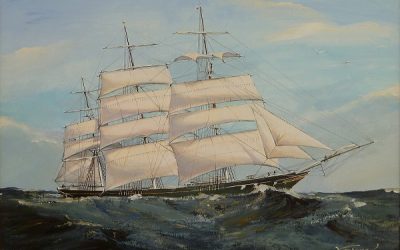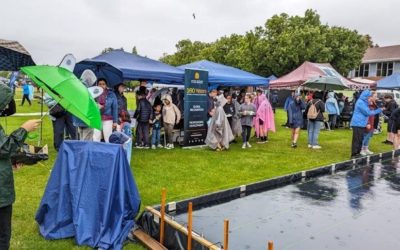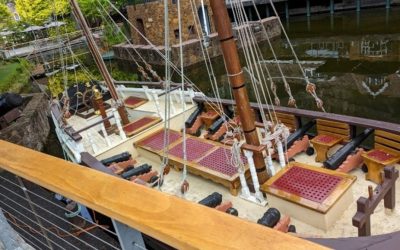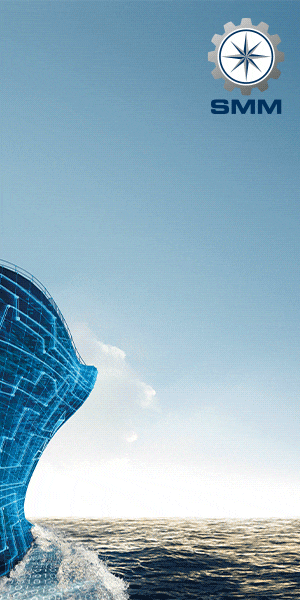The Naval Architect: June 2018
In the previous article [1] some of the long-standing technical problems associated with demonstrating a tanker’s compliance with the damage stability regulations in MARPOL [2], the IBC Code [3], the BCH Code [4], the IGC Code [5], the GC Code [6] and the EGC Code [7] were outlined. On 22nd May 2014 MARPOL Annex 1 was amended by the addition of Chapter 4, Paragraph 28(6) and Chapter 1, Paragraph 3(6), which states that all oil tankers constructed on or after 1st January 2016 shall be fitted with a stability Loading Instrument capable of verifying compliance with not only intact but also damage stability requirements. Oil tankers constructed before 1st January 2016 shall be fitted with such a Loading Instrument at the first scheduled renewal survey of the ship on or after 1st January 2016 but not later than 1st January 2021, although this requirement may be waived if it can be shown that the existing system for verifying damage stability is satisfactory.
Similar amendments were made to ships constructed under the remaining Codes listed above except for the IGC Code where the amendments apply to ships constructed prior to 1st July 2016 with compliance required at the first renewal survey after this date and no later than 1st July 2021. In addition, the International Oil Pollution Prevention (IOPP) Certificate in MARPOL Appendix II (Form B) and the Certificates of Fitness in the remaining Codes were amended with statements to the effect that either the tanker has been fitted with an approved stability Loading Instrument in accordance with Regulation 28(6) (or equivalent in the remaining Codes) or that the fitting has been waived in accordance with Regulation 3(6) (or equivalent).
The IMO guidelines on tanker damage stability computers
From the above amendments to MARPOL etc. it can be seen that it was concluded at IMO that the solution to the technical problems of demonstrating compliance with the damage stability regulations, as discussed in the previous article [1], is to employ suitable damage stability computers either on board as a Loading Instrument or at a shore station with suitable communication links. Recognising the need for a fuller explanation and more background information, IMO produced circular MSC.1/Circ.1461 ‘Guidelines for Verification of Damage Stability Requirements for Tankers’ [8], which was approved at MSC 92 on 8 July 2013. The Guidelines are in two parts.
Part 1 defines how approval of damage stability calculations or stability Loading Instruments for new oil tankers, chemical tankers and gas carriers constructed on or after 14th June 2013 should be conducted. Although it directly applies to new approvals, Part 1 summarises all pre-existing guidance with which any previous damage stability approvals should have originally been made, hence it may also be used to assess the validity of an existing approval. Technically, an existing stability approval which does not follow the Guidelines is deficient, as it does not follow the original Instruments against which it is approved e.g. MARPOL Annex 1. Part 1 also includes details of the qualifications of the personnel involved, the plans and data to be supplied, the calculation procedures and advice regarding the need to consider all relevant damage cases, including lesser cases of damage to both sides and bottom of the ship. It also describes the permissible limits within which damage stability calculations or a damage stability Loading Instrument must lie when checked for accuracy.
Part 2 is mainly intended for the guidance of third parties, such as ship operators, ship’s officers and Port State Control Officers (PSCO). Section 6 describes the records required to be kept on board all tankers and gas carriers in order to demonstrate damage stability compliance for the approved methods of verification listed in Section 4. The processes and records described here are also applicable to existing ships and Section 6 should be considered mandatory once re-certification of existing tankers is completed under the revised Instruments. Part 2 provides guidance for operators and ship’s officers to meet their obligations under the ISM Code, and to related third parties such as PSCO and International Safety Management (ISM) auditors.
To ensure that tankers can have their damage stability reliably verified on board they must either be fitted with an approved stability Loading Instrument (the default position for new ships unless there are compelling reasons not to comply) or, for existing tankers, certified to continue to use a validated and approved existing method. All existing damage stability approvals in place at the time the guidelines came into force remain valid provided they meet the standards from Part 1 (as this repeats the required practice at the time of the original approval) and on condition that any guidance is being correctly followed.
The guidelines were developed by the IMO well before the applicable enforcement date for the changes to MARPOL and the other Codes, namely 1st January 2016. This was to allow time for operators to assess what changes, if any, were required to the stability verification methods used on their existing tankers and, if deemed necessary, to order new computer systems (on-board Loading Instruments) and have them approved in time to comply with the new regulations within the phase-in period.
Following the phase-in of changes to the applicable Instruments and re-certification, the default method of damage stability verification shall be carriage of a Type 3 stability Loading Instrument, which is discussed below, capable of verification by direct calculation. Other acceptable methods of verification, if retained from before re-certification, must be validated against the Guidelines and then authorised under a waiver on the IOPP Form B or Certificate of Fitness. These accepted methods include operating the tanker closely in accordance with, but not outside the range of, the loading conditions given in the approved Stability Information Book (Trim and Stability Book).
Type 3 tanker damage stability computers
The International Association of Classification Societies (IACS) had previously introduced a Unified Requirement (UR) relating to stability computation under URL5, with the objective that any Loading Instrument fitted on a ship classed with an IACS member contracted after 1st July 2005, which incorporates a stability element, should be approved for verification of all stability requirements that apply, including damage.
Under these requirements, a Loading Instrument utilising Type 3 software is capable of automatically calculating both intact and damage stability by direct application of pre-programmed damage cases for each loading condition. A clear warning of non-compliance shall be given on screen and in hard copy printout if any of the loading limitations are not complied with. ‘Direct calculation’ means that the stability Loading Instrument utilises a full 3-D model of the ship including the hull and all buoyant appendages, all damageable compartments / tanks / spaces downflooding points etc., and is programmed to analyse all the potential damage scenarios required by the relevant Code or Instrument.
Conclusions
Although calculation of the damage stability of tankers is complex, recent advances in computer hardware and software have enabled comprehensive and robust assessments to be performed quickly and economically on board, which is considered preferable to placing reliance upon shore-based stations. The amended IMO Regulations promote the use of these improved computer systems (on-board Loading Instruments) in preference to using simplified manual and semi- manual methods for verifying compliance with damage stability regulations.
The United Kingdom’s Maritime and Coastguard Agency’s (MCA) preference is for the use of on-board stability Loading Instruments running Type 3 software on all tankers subject to the amended Regulations even though these still permit existing methods of verification to be retained on tankers constructed before 1st January 2016. New guidelines in the form of a Marine Guidance Notice (MGN) are currently being produced in consultation with stakeholders. It is hoped that this will be able to be outlined and discussed with readers of The Naval Architect in the near future once the MGN is published.
Disclaimer
The views expressed in this article are those of the authors and do not necessarily represent those of the organisations with which they are affiliated and the professional institutions of which they are members.









